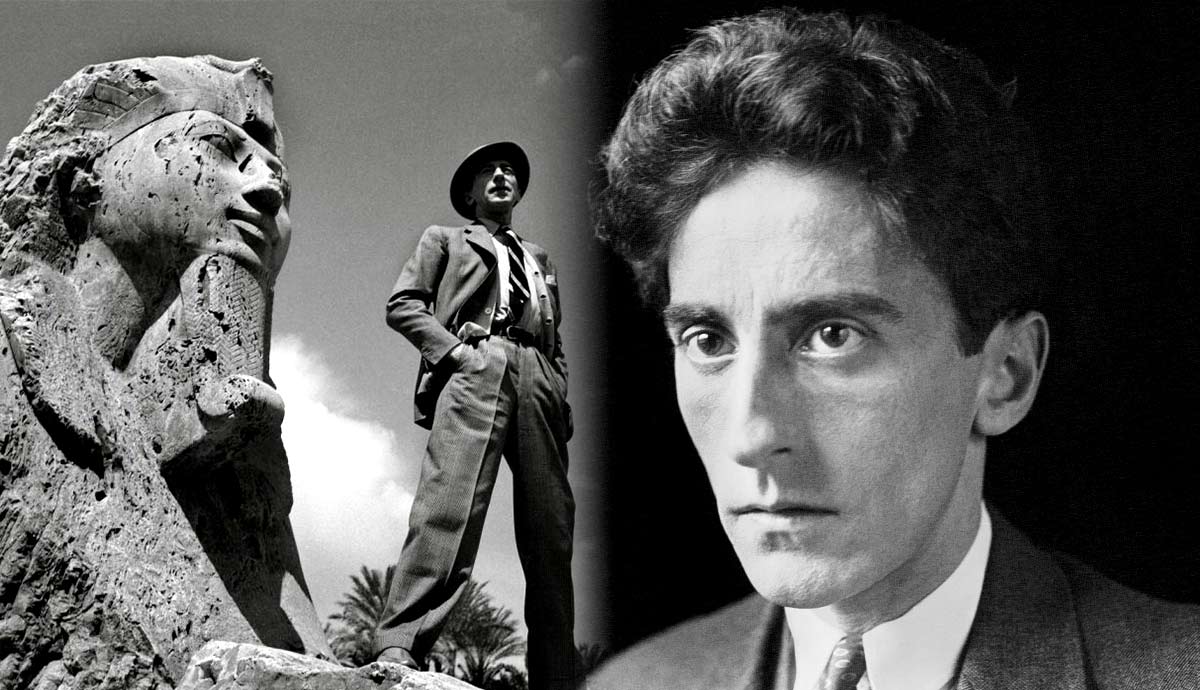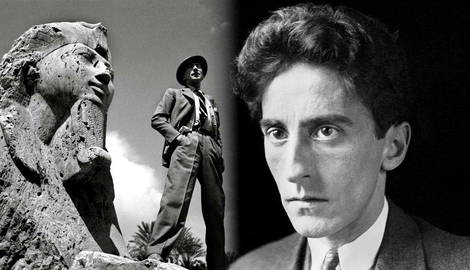
Jean Cocteau’s life was characterized by a series of highs and lows. He was no stranger to abuse and tragedy, which caused him to recede into a world of fantastical, childlike wonder. This manifested in a wide-ranging, definitive, and unusual body of work that has come to characterize 20th-century Surrealist film. Below we delve into some aspects of his personal life and career that may account for his unique filmography, novels, and poetry.
Jean Cocteau’s Early Trauma

Cocteau grew up in a wealthy family in a small town near Paris called Maisons-Laffitte. His father, a lawyer, retired early in Cocteau’s childhood to paint and explore his hobbies. He taught Cocteau to draw and paint at a young age, encouraging his artistic and creative abilities. When Cocteau was 10 years old, his father committed suicide. His suicide deeply affected Cocteau, and the young boy grasped at his happy childhood mentally and artistically for the rest of his life.
A Young Poet

Cocteau attended Lycée Condorcet during his teenage years. He struggled with academics considerably, only excelling in artistic subjects. He was subsequently expelled and received private lessons at home. He began to spend much of his time near the theatre, writing plays with his school friend René Rocher. He continued to fall flat in academics, failing the French high school baccalaureate exam. Cocteau then turned his attention to poetry, through which he was able to channel his inner turmoil.
Art and Culture in Paris

In 1907, Cocteau moved to Paris with his mother. Their relationship became increasingly codependent, furnishing Cocteau’s inability to distinguish his reality from fantasy. He focused his attention on a dreamlike life and rejected all forms of sadness as a defense mechanism. Throwing himself into the Parisian bohemia, he met Sergey Diaghilev, a Russian art critic and ballet impresario who assisted and encouraged Cocteau to explore the genre of ballet.
In the subsequent years, he also met several prominent artistic and cultural members of the community, including Pablo Picasso, Amadeo Modigliani, Marcel Proust, André Gide, and Léon Bakst. He collaborated with some of these artists and writers, producing the libretto to Le Dieu Bleu (1912) and, in the following years, the ballet Parade (1917), which was later elevated to a full opera. He also later became lifelong friends with singer Edith Piaf, who starred in his play Le Bel Indifférent (The Beautiful Indifferent; 1940).
Cocteau in the War

During his early years in Paris, although enlisted in the war efforts, Cocteau did not serve as a soldier. Instead, he served briefly as a Red Cross ambulance driver on the Belgian warfront. It was during the war that he met Guillaume Apollinaire, a famed poet and art critic. This experience inspired several literary works; notably, his novel Thomas l’imposteur (Thomas the Imposter; 1923). He also met aviator pilot Ronald Garros, which inspired him to write a series of poems on aviation, Le Cap de Bonne-Espérance (The Cape of Good Hope; 1919). However, in 1915 Cocteau was arrested and returned to Paris, where he continued to expand his literary network and career.
Cocteau’s Role in Surrealism, Dada, and Cubism

Following World War I, Cocteau began to associate with the Cubism movement, calling it a ‘recall to order’ (rappel à l’ordre). He continued to pursue a friendship with Pablo Picasso and distanced himself from some of his former contacts. This spurred the production of the aforementioned ballet Parade (1917) and other projects. He has also been associated with the Dada and Surrealist movements due to his connections with known avant-garde artists and writers in Paris.
Although often associated with Surrealism, Cocteau was bullied and targeted by the group of Parisian artists. Much of the resentment towards Cocteau was supposedly motivated by André Breton’s joint homophobia and jealousy over his close relationship with Guillaume Apollinaire. Additionally, Cocteau’s fantastical and idealistic prose opposed the Surrealist school of thought. In 1932, Cocteau released his film The Blood of the Poet, prompting the Surrealist to accuse him of plagiarism and attempt to attack him.
He Was Bisexual

Cocteau undertook numerous romantic relationships with both men and women, many being quite tumultuous and often unrequited. He notes his first sexual experience as being with a jockey named Albert Botten. In 1918, he met 15-year-old French student and Poet Raymond Radiguet, who he became infatuated with. The pair became very close, collaborating on numerous projects and even taking trips together. However, despite their intimacy, the two never shared a romantic relationship as Radiguet was exclusively attracted to women. He also engaged in relationships with actress Madeleine Carlier, fellow writer Maurice Rostand and Édouard Dermit among others.

One of Cocteau’s most notable and significant relationships was with actor Jean Marais. The pair met in 1937, engaging in multiple collaborations and remaining friends and on-and-off lovers for the remainder of Cocteau’s life. Marais would go on to star in numerous films by Cocteau, including La Belle et la Bête (Beauty and the Beast; 1946), Les Parents Terribles (The Terrible Parents; 1948), L’Aigle à deux têtes (The Eagle with Two Heads; 1948), Orphée (1950) and Le Testament d’Orphée (The Testament of Orpheus; 1960).
Cocteau’s Vice: Opium

Cocteau began using opium in the 1920s as a tool of escapism. In 1928, he admitted himself to a rehabilitation clinic to cure the addiction, prompting novels Les Enfants Terribles (The Terrible Children; 1929) and Opium: The Diary of an Addict (1930). However, his recovery did not last long, and he continued to use opium throughout his young life. He engaged in a particularly turbulent, drug-crazed affair with Russian Princess Natalie Paley, who was married. The pair, both seeking an emotional and mental escape, mutually encouraged each other’s destructive habits, going on a massive opium bender and seldom leaving the house.
A Political Man

During World War II, Cocteau’s life and work were largely influenced by the political and cultural climate, although his sympathies held selfish motivation. He supported the League Against Anti-Semitism, leading to a call for his death by the right wing. His show Les Parents Terribles was subsequently bombed with tear gas. Shortly afterward, he befriended German sculptor and Nazi sympathizer Arno Breker. Through this friendship, he was able to remove Marais’ name from a Nazi death list after his assault on a member of the right wing. Breker then swayed Cocteau in support of the Nazi party and Cocteau wrote an article in public celebration of Breker and his work.

FAQs
What is the impact of Jean Cocteau’s early life on his artistic style?
Jean Cocteau’s early life, marked by privilege and tragedy, shaped his artistic style with themes of duality, fantasy, and the supernatural.

How did Jean Cocteau’s sexuality influence his work and relationships?
Cocteau’s fluid sexuality fueled his exploration of desire, identity, and taboo, influencing his art and personal relationships.
Was Jean Cocteau a true Surrealist?
While Cocteau collaborated with Surrealists and shared their ethos, he maintained independence, incorporating surreal elements but defying strict categorization as a “true” Surrealist.
This article was first published on March 27, 2020, and revised on April 25, 2024.










